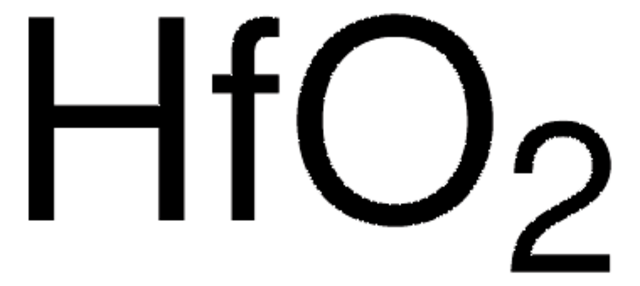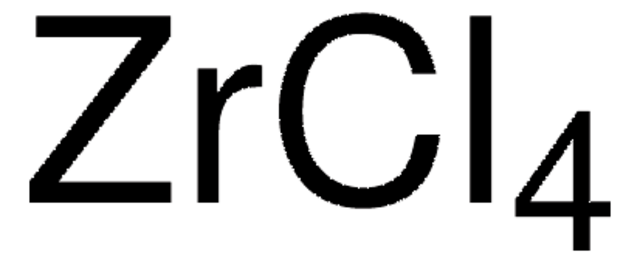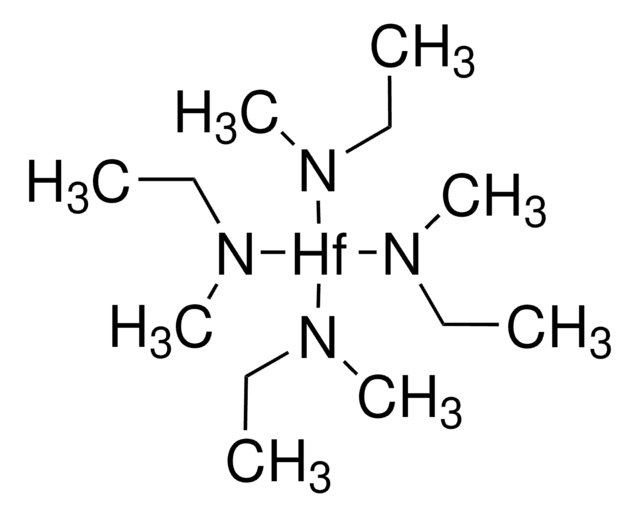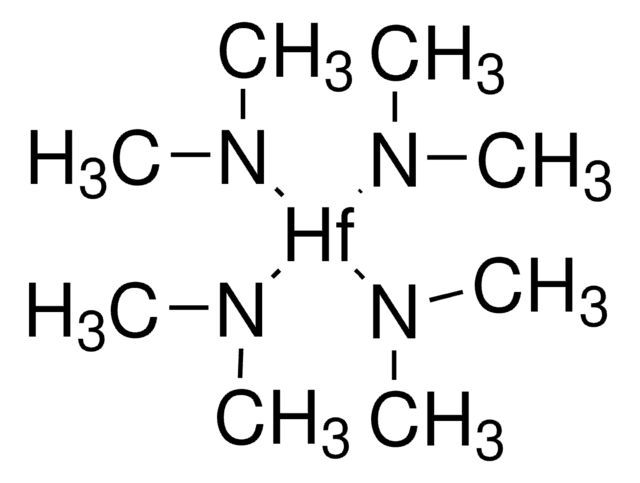Wichtige Dokumente
258202
Hafnium(IV)-chlorid
98%
Synonym(e):
Hafnium tetrachloride, Tetrachlorohafnium
About This Item
Empfohlene Produkte
Qualität
for analytical purposes
Dampfdruck
1 mmHg ( 190 °C)
Assay
98%
Form
powder
mp (Schmelzpunkt)
432 °C (lit.)
Löslichkeit
H2O: decomposes(lit.)
SMILES String
Cl[Hf](Cl)(Cl)Cl
InChI
1S/4ClH.Hf/h4*1H;/q;;;;+4/p-4
InChIKey
PDPJQWYGJJBYLF-UHFFFAOYSA-J
Suchen Sie nach ähnlichen Produkten? Aufrufen Leitfaden zum Produktvergleich
Verwandte Kategorien
Allgemeine Beschreibung
Anwendung
- A precursor in the synthesis of lithium hafnium phosphate, which is a solid electrolyte material used in lithium batteries due to its high ionic conductivity and chemical stability.
- A catalyst in the acetalization process of various carbonyl compounds, including aldehydes and ketones.
- A catalyst in the direct ester condensation of carboxylic acids with alcohols.
- A high-capacity cathode material for lithium and sodium-ion batteries.
Signalwort
Danger
H-Sätze
Gefahreneinstufungen
Eye Dam. 1 - Met. Corr. 1 - Skin Corr. 1
Zusätzliche Gefahrenhinweise
Lagerklassenschlüssel
8A - Combustible corrosive hazardous materials
WGK
WGK 3
Hier finden Sie alle aktuellen Versionen:
Besitzen Sie dieses Produkt bereits?
In der Dokumentenbibliothek finden Sie die Dokumentation zu den Produkten, die Sie kürzlich erworben haben.
Kunden haben sich ebenfalls angesehen
Artikel
In the last two decades, a new method termed solid-state metathesis (SSM) has been developed to synthesize compounds that are often difficult to produce conventionally.
Unser Team von Wissenschaftlern verfügt über Erfahrung in allen Forschungsbereichen einschließlich Life Science, Materialwissenschaften, chemischer Synthese, Chromatographie, Analytik und vielen mehr..
Setzen Sie sich mit dem technischen Dienst in Verbindung.









